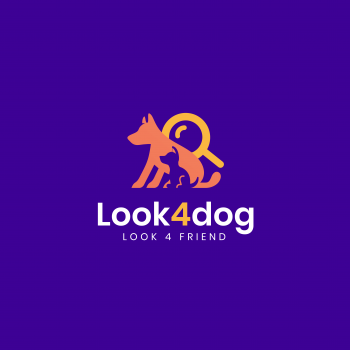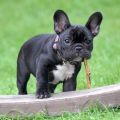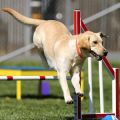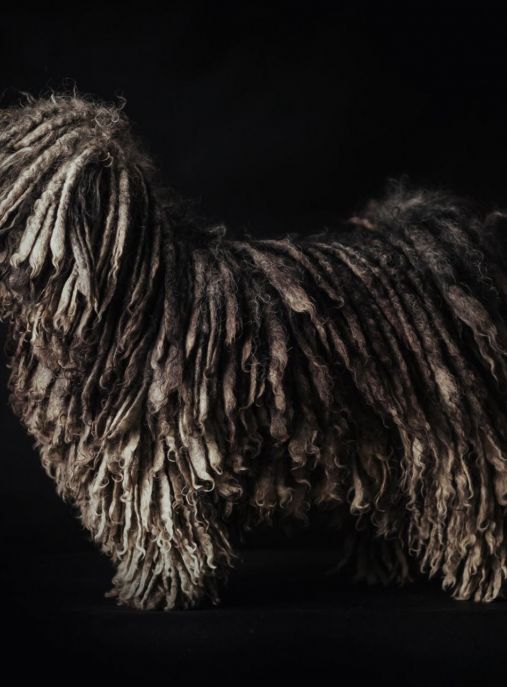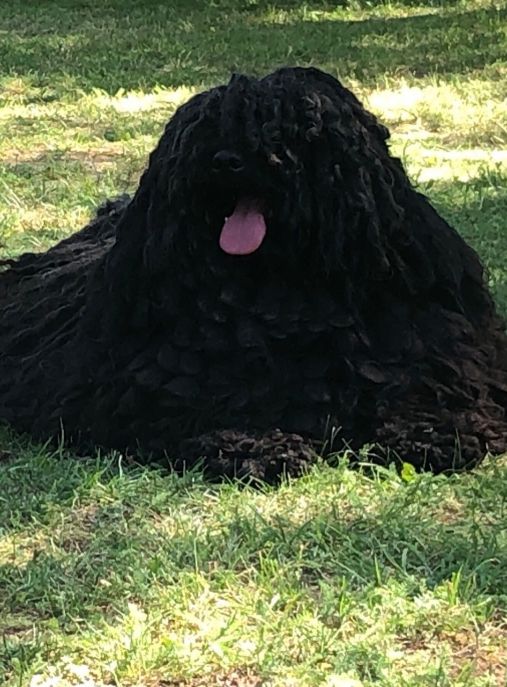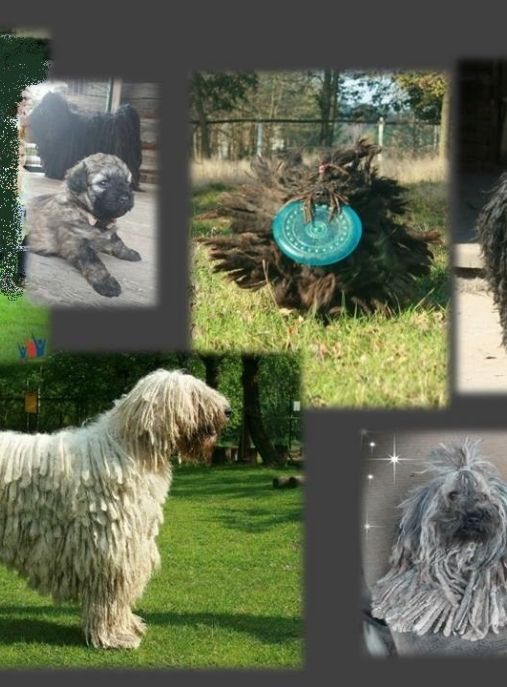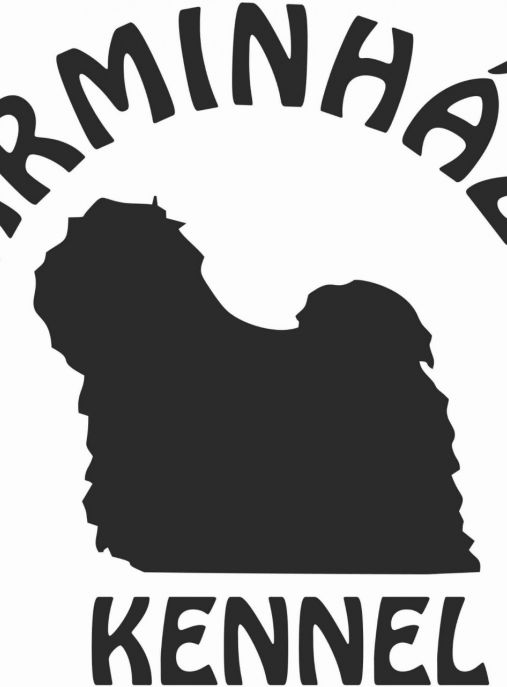The Puli dog breed is a unique and fascinating breed that has captured the hearts of dog lovers around the world. With its distinctive corded coat and lively personality, the Puli stands out from the crowd. In this text, we will delve into the history, characteristics, and interesting facts about this remarkable breed.
The Puli breed originated in Hungary, where it was primarily used as a herding dog. Its name, "Puli," is derived from the Hungarian word "pulik," which means "flock." This breed's history can be traced back over a thousand years, making it one of the oldest known herding breeds in existence.
According to the FCI (Fédération Cynologique Internationale) typology, the Puli belongs to Group 1, Section 1: Sheepdogs and Cattledogs. This group includes various herding breeds that have been bred for their exceptional herding abilities. The Puli is also recognized by other kennel clubs, such as the American Kennel Club (AKC) and the United Kennel Club (UKC).
The Puli is a versatile breed that excels in various roles. Originally bred for herding, these dogs are still used for this purpose in some parts of the world. Their agility, intelligence, and strong herding instincts make them excellent at rounding up and controlling livestock. However, Pulis have also found success in other areas, such as obedience, agility, and even as therapy dogs. Their loyal and affectionate nature makes them wonderful companions for families and individuals alike.
In terms of physical characteristics, the Puli is a medium-sized breed with a sturdy build. The average weight of a Puli ranges from 25 to 35 pounds (11 to 16 kilograms) for females and 30 to 40 pounds (14 to 18 kilograms) for males. Their height typically ranges from 16 to 17 inches (41 to 43 centimeters) at the shoulder. Despite their relatively small size, Pulis are known for their strength and endurance.
One of the most distinctive features of the Puli is its unique coat. The Puli's coat consists of long, dense cords that form naturally as the dog matures. These cords, which resemble dreadlocks, provide excellent protection against harsh weather conditions and help the dog blend in with its surroundings. The coat comes in various colors, including black, white, gray, and cream. Regular grooming is essential to maintain the cords and prevent matting.
The Puli has a life expectancy of around 12 to 16 years, which is relatively long for a dog of its size. However, like all breeds, Pulis can be prone to certain health issues, including hip dysplasia, progressive retinal atrophy (PRA), and allergies. Regular veterinary check-ups, a balanced diet, and regular exercise can help ensure the overall health and well-being of these dogs.
Despite their unique appearance, Pulis are known for their friendly and playful nature. They are highly intelligent and require mental stimulation to prevent boredom. Training a Puli can be a rewarding experience, as they are quick learners and eager to please their owners. Early socialization and consistent, positive reinforcement training methods are crucial for raising a well-behaved and well-adjusted Puli.
In conclusion, the Puli is a remarkable breed with a rich history and distinctive appearance. From its origins as a herding dog to its versatility in various roles, the Puli has proven to be an exceptional companion and working dog. With their loyal and affectionate nature, Pulis make wonderful additions to families and individuals seeking a devoted and intelligent canine companion.
Puli dogs are a unique and fascinating breed known for their distinctive corded coat and lively personality. With their intelligent and independent nature, Pulis make for loyal and devoted companions. In this text, we will delve into the character of Puli dogs, exploring their behavior, how to raise them, and the best training methods for this breed.
Puli dogs are highly energetic and thrive on physical activity. They have a natural herding instinct, which can sometimes manifest as nipping or chasing behaviors. Therefore, it is crucial to provide them with regular exercise and mental stimulation to keep them content and prevent any destructive tendencies. Long walks, jogging, and engaging play sessions are all excellent ways to keep a Puli happy and well-exercised.
Despite their lively nature, Pulis are also known for their calm and gentle demeanor. They are incredibly affectionate and form strong bonds with their families. This breed is particularly good with children, often displaying a patient and protective attitude towards them. However, it is essential to socialize them from an early age to ensure they are comfortable around strangers and other animals.
Puli dogs are highly intelligent and possess a strong sense of independence. While this makes them excellent problem solvers, it can also lead to stubbornness during training. Patience, consistency, and positive reinforcement techniques are key when training a Puli. Harsh methods or punishment will only lead to resistance and potentially damage the trust between the dog and its owner. Instead, reward-based training, using treats or praise, will yield the best results.
The unique coat of a Puli requires special attention and care. The dense cords that form naturally in their fur need regular maintenance to prevent matting and ensure the dog's comfort. Regular brushing and separating the cords by hand are necessary to keep the coat clean and healthy. Additionally, regular bathing is essential to prevent dirt and debris from accumulating within the cords.
When raising a Puli, it is crucial to establish clear boundaries and rules from the beginning. This breed can be prone to assert dominance if not properly guided. Consistent training and firm leadership will help them understand their place within the family hierarchy. Early socialization is also vital to expose them to various environments, people, and animals, ensuring they grow up to be well-rounded and confident dogs.
Puli dogs are known for their watchdog abilities. They are naturally alert and protective, making them excellent guard dogs. However, this can sometimes lead to excessive barking if not properly managed. Early training to differentiate between appropriate and unnecessary barking is essential to prevent this behavior from becoming a nuisance.
In conclusion, Puli dogs are intelligent, energetic, and loyal companions. With the right training and socialization, they can be well-behaved and obedient pets. However, their independent nature requires patient and consistent handling. The unique coat of a Puli demands regular maintenance to keep it healthy and tangle-free. If you are looking for a lively and devoted companion who will keep you on your toes, the Puli dog may be the perfect breed for you.
The Puli dog is a unique and distinctive breed known for its corded coat and lively personality. Caring for a Puli requires specific attention to their coat, exercise needs, grooming, and overall health. Here are some tips on how to care for Puli dogs, including what to do and what not to do:
1. Coat Care:
- Do: Regularly brush and separate the cords to prevent matting and ensure proper air circulation.
- Do: Bathe your Puli only when necessary, using a mild dog shampoo and thoroughly rinsing to prevent residue buildup.
- Do: Allow the coat to air dry naturally, as using a blow dryer may cause the cords to fuse together.
- Don't: Cut or trim the cords, as it ruins the characteristic appearance of the breed.
2. Exercise and Mental Stimulation:
- Do: Provide daily exercise to keep your Puli physically and mentally stimulated. They enjoy activities like walks, runs, and playing fetch.
- Do: Engage in interactive games and puzzles to challenge their intelligence and prevent boredom.
- Don't: Leave your Puli alone for extended periods as they thrive on human companionship and may become anxious or develop destructive behaviors.
3. Grooming:
- Do: Regularly check and clean your Puli's ears to prevent infections. Use a veterinarian-recommended ear cleaner and gently wipe the outer ear.
- Do: Trim their nails regularly to prevent overgrowth and discomfort. If you're not comfortable doing it yourself, seek professional help.
- Don't: Neglect dental hygiene. Brush your Puli's teeth regularly with a dog-friendly toothbrush and toothpaste to prevent dental issues.
4. Health Care:
- Do: Schedule regular veterinary check-ups to monitor your Puli's overall health and address any concerns promptly.
- Do: Vaccinate your Puli according to the recommended schedule to protect against common diseases.
- Do: Provide a balanced diet with high-quality dog food to maintain their overall health and prevent obesity.
- Don't: Overfeed your Puli, as they are prone to weight gain. Follow portion control guidelines and avoid excessive treats.
5. Socialization and Training:
- Do: Socialize your Puli from an early age to ensure they are comfortable around people, other animals, and different environments.
- Do: Enroll your Puli in obedience training classes to establish good behavior and reinforce their intelligence.
- Don't: Use harsh training methods or punishment. Puli dogs respond best to positive reinforcement and rewards.
6. Safety:
- Do: Secure your Puli in a well-fenced yard or use a leash during walks to prevent them from wandering off or getting into dangerous situations.
- Do: Provide a safe and comfortable environment indoors, with access to fresh water, a cozy bed, and appropriate chew toys.
- Don't: Leave your Puli exposed to extreme weather conditions for extended periods. Their dense coat may make them susceptible to overheating or hypothermia.
Remember, each Puli is unique, and their care may vary slightly. It's essential to observe your dog's behavior, consult with a veterinarian, and adapt their care accordingly. With proper care and attention, your Puli will thrive and bring joy to your life for many years to come.
The Puli dog, known for its distinctive corded coat, comes in a variety of colors, but the most common and iconic color is black. The black Puli is instantly recognizable with its dense, curly, and corded fur, which gives it a unique and striking appearance.
The black color of the Puli's coat is deep and rich, often resembling a velvety texture. It is a solid color that covers the entire body, from head to tail, without any markings or patterns. The black coat is usually uniform in shade, although some Pulis may have slight variations in color intensity, with certain areas appearing darker or lighter.
The black Puli's coat is not just visually appealing; it also serves a practical purpose. The dense cords protect the dog from harsh weather conditions, such as rain, snow, and extreme temperatures. These cords also act as a natural insulation, keeping the Puli warm in cold climates and cool in hot weather.
The cords of the black Puli's coat start forming at around six months of age. Initially, the fur is soft and fluffy, but as the Puli matures, the cords gradually develop. The cords are formed by individual strands of hair intertwining and matting together, creating long, rope-like structures. With proper care and grooming, the cords can grow to impressive lengths, giving the Puli an even more striking appearance.
Maintaining the black Puli's coat requires regular grooming to prevent matting and keep the cords clean and healthy. The cords need to be separated and maintained to avoid them becoming one large, tangled mass. Regular bathing and drying are also essential to keep the coat clean and odor-free.
Despite the black Puli's unique appearance, it is worth noting that the breed can come in other colors as well. These include white, gray, and various shades of apricot. However, the black Puli remains the most common and iconic color, often associated with this remarkable breed.
In conclusion, the black Puli dog possesses a stunning and distinctive coat color that sets it apart from other breeds. Its deep black color, combined with the dense, curly, and corded fur, creates a visually striking and unforgettable appearance. Whether seen from a distance or up close, the black Puli's coat is a testament to the breed's beauty and uniqueness.
The Puli dog breed is known for its distinctive corded coat and lively personality. These medium-sized dogs are generally healthy, but like all breeds, they are prone to certain health issues. Understanding the common diseases found in Puli dogs and implementing proper care can help ensure their overall well-being.
One of the most prevalent health concerns in Puli dogs is hip dysplasia. This condition occurs when the hip joint doesn't develop properly, leading to discomfort, lameness, and arthritis. Regular exercise on soft surfaces, maintaining a healthy weight, and avoiding excessive jumping can help reduce the risk of hip dysplasia. Additionally, breeding Puli dogs with certified hip scores can help minimize the occurrence of this condition.
Another common health issue in Puli dogs is progressive retinal atrophy (PRA). PRA is a degenerative eye disease that leads to gradual vision loss and, in severe cases, blindness. Regular eye examinations by a veterinary ophthalmologist can help detect PRA early on. Unfortunately, there is no cure for PRA, but supportive care and environmental modifications can help affected dogs adapt to their vision loss.
Patellar luxation is another condition seen in Puli dogs. It occurs when the kneecap slips out of place, causing pain and lameness. Mild cases may not require treatment, but severe cases may require surgical correction. Regular exercise and maintaining a healthy weight can help prevent or manage this condition.
Pulmonary fibrosis is a rare but serious respiratory disease that affects some Puli dogs. It causes scarring of the lung tissue, leading to breathing difficulties and reduced exercise tolerance. Unfortunately, there is no cure for pulmonary fibrosis, and affected dogs may require supportive care, such as medication to manage symptoms and improve quality of life.
To ensure the overall health of Puli dogs, regular veterinary check-ups are crucial. These check-ups should include vaccinations, parasite prevention, dental care, and routine blood work to monitor organ function. Additionally, maintaining a balanced diet that meets their nutritional needs is essential. Puli dogs should be fed high-quality dog food that is appropriate for their age, size, and activity level.
Grooming is another important aspect of Puli dog care. Their unique corded coat requires regular maintenance to prevent matting and keep the skin healthy. Regular brushing and occasional bathing are necessary to keep the cords clean and free from debris. It's important to dry the cords thoroughly after bathing to prevent skin infections.
Exercise is vital for the physical and mental well-being of Puli dogs. They are an active breed that thrives on regular physical activity. Daily walks, playtime, and mental stimulation through training or puzzle toys are essential to prevent boredom and destructive behavior.
Lastly, socialization is crucial for Puli dogs. They are known for their loyalty and can be reserved around strangers if not properly socialized from a young age. Early and ongoing socialization with various people, animals, and environments can help them develop into well-rounded and confident dogs.
In conclusion, while Puli dogs are generally healthy, they are prone to certain health conditions such as hip dysplasia, progressive retinal atrophy, patellar luxation, and pulmonary fibrosis. Regular veterinary care, proper nutrition, grooming, exercise, and socialization are key to maintaining their overall health and well-being. By providing the necessary care, Puli dog owners can enjoy the companionship of these unique and wonderful dogs for many years to come.
The Puli dog breed is known for its unique appearance and lively personality. To ensure the health and well-being of these dogs, it is crucial to provide them with a balanced and nutritious diet. Proper nutrition plays a vital role in maintaining their energy levels, promoting a healthy coat, and supporting overall growth and development.
When it comes to feeding a Puli dog, it is important to consider their specific dietary needs. Here are some guidelines and advice on how to feed and what to avoid when it comes to the nutrition of Puli dogs:
1. High-Quality Dog Food: Choose a premium-quality dog food that is specifically formulated for medium to large-sized breeds. Look for a brand that lists meat as the primary ingredient, such as chicken, beef, or fish. Avoid foods that contain fillers, by-products, or artificial additives.
2. Balanced Diet: Puli dogs require a balanced diet that includes a mix of proteins, carbohydrates, fats, vitamins, and minerals. Ensure that the dog food you choose provides a proper balance of these essential nutrients. Consult with a veterinarian to determine the specific dietary requirements for your Puli based on their age, weight, and activity level.
3. Protein: Protein is crucial for the growth and maintenance of muscles in Puli dogs. Look for dog foods that contain high-quality animal protein sources like chicken, turkey, or fish. Aim for a protein content of around 20-30% in their diet.
4. Carbohydrates: Carbohydrates provide energy to Puli dogs. Opt for dog foods that include whole grains like brown rice, oats, or barley. These complex carbohydrates are more beneficial than simple carbohydrates like corn or wheat, which can cause allergies or digestive issues in some dogs.
5. Fruits and Vegetables: Including fruits and vegetables in your Puli's diet can provide essential vitamins, minerals, and antioxidants. Some safe options include carrots, sweet potatoes, blueberries, and green beans. However, avoid feeding them toxic foods like grapes, raisins, onions, or garlic.
6. Healthy Fats: Healthy fats are essential for maintaining a Puli's skin and coat health. Look for dog foods that contain sources of omega-3 fatty acids like fish oil or flaxseed. These fats also support brain function and overall well-being.
7. Portion Control: Puli dogs are prone to obesity, so it is crucial to monitor their portion sizes. Follow the feeding guidelines provided by the dog food manufacturer and adjust the portions based on your dog's activity level and body condition. Avoid overfeeding or free-feeding, as it can lead to weight gain and related health issues.
8. Hydration: Ensure that your Puli always has access to fresh, clean water. Hydration is essential for their overall health and digestion.
9. Avoid Harmful Foods: Some human foods can be toxic to dogs. Avoid feeding your Puli chocolate, caffeine, alcohol, onions, garlic, grapes, raisins, avocados, or any food containing artificial sweeteners like xylitol.
10. Regular Vet Check-ups: Regular veterinary check-ups are crucial to monitor your Puli's overall health and ensure they are receiving the right nutrition. Your vet can provide specific dietary recommendations based on your dog's individual needs.
Remember, every Puli dog is unique, and their nutritional needs may vary. It is always recommended to consult with a veterinarian to create a personalized diet plan that suits your Puli's specific requirements. By providing a balanced and nutritious diet, you can help your Puli live a long, healthy, and happy life.

